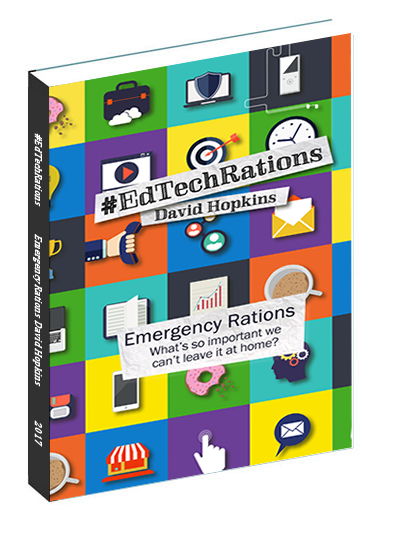What works and what doesn’t?
Re-reading an old post by Melissa Milloway, about her eLearning 10 pet-peeves, reminded my of a post I started and never finished last year. Here is the post I (think) I wanted to write then, and there are 11 of mine.
What works:
- Collaboration: working with colleagues that are both near and far is always a rewarding experience. Technology exists now for high quality video and audio collaboration as well as working collaboratively in real time on documents. There really is no excuse to not be doing this now.
- Leadership: it never ceases to amaze me when I hear stories of the different types of management and leadership friends have experienced over the years. In summary I think I have been very lucky with all my managers or mentors in that they have all been supportive and engaging in my work and how I approach it. Now that I’m in a position to give back to my own line management/leadership role I feel I am better placed to give similar support and encouragement.
- Tools: the saying is that a worker is only as good as their tools. I don’t agree with this as you can, and should, be better than your tools. In the world or educational technology we can and should utilise the best tools for the task, to be able to bring multiple solutions from a toolbag and select the best one for the whole task … which may not be the best tool, but it’s how we use it that makes it better.
- Thoughtfulness: think about the learner and learning objectives. Think about how to not only present the subject but how it will be received. This is exceptionally difficult if the audience it global, but consideration of mixed cultures and mixed expectations will at least enable you to present the materials sensitively and in an appropriate way.
- Links: it’s online. It’s the internet. Use it! Provide links to key information, to recommended reading, to extra not-necessarily-key-but-still-interesting reading, to videos, to books, to articles, to blogs. Link away. Some students will look, most might not. But let them decide.
- Reflection: reflective practice has served me well and I believe is also a key element of learning. Open a course with something to get the learners thinking, give them information to help them further their understanding, then give them space to reflect on the initial question and how their own experiences or readings have changed. Then give them space/time to capture this reflection. It doesn’t have to be formal or even shared, but it could be.
What doesn’t work:
- Ego: when one or more ego in the room is in conflict with another, whether there is seniority or power-play in action or whether it’s just a difference of (very strong) opinion, it will be difficult for those in between to move the discussion and/or work forward until it is resolved.
- Time: very similar to the impact a clash of personalities will have on your work, the impact of incorrectly set or inaccurately set timeframes will also affect your ability to both think and plan clearly. Working with colleagues to ensure correct information at the start of the working partnership can help to ensure an appropriate timeframe is used. Sometimes we can’t have the time we want for something we have to do, but where we have some element of control over setting the goals, we should be sure all parties are aware of this and have the opportunity to have their needs heard. All before the timeframe is agreed.
- Stock photos: most of us can spot these a mile off, so it’s a safe bet the learner can too. Which means the imagery you’ve selected wont been viewed as authentic, original, or even relevant to the learning. I try and use good quality royalty free images available under a Creative Commons license, but I am also conscious that they may fall into the trap I describe above. Sometimes we need imagery of situations we cant easily manufacture ourselves for the purpose of enhancing the understanding or engagement of a case study or theory, but we should be mindful of the chosen images enhancing the learning experience, not detracting from it.
- Video or animation: the same as above here, so long as the video or animation serves a defined purpose to enhance the learning, then please ask yourself do you actually need it? Not only will you save time and effort in not developing it, the learners will thank you too. If you do include a video, make sure you put it into context of the subject and course and give the learner a reason to watch it: “Whilst you watch the following film, think about how the concept of X is applied to the subject, and whether a different approach would have had a similar or different response?”
- Force: sometimes you just can’t force learners to engage with you, the materials or each other. Some cohorts of students will be more engaged and interact than the next cohort. If you are confident in your work and the materials you’ve created, give it a couple of cohorts to settle down before you make any knee-jerk reaction and make changes. Obviously, if there are major issues or corrections needed then address them, but not all cohorts will interact or ‘learn’ the same way or at the same time. Patience!
PS. Melissa’s series of posts called ‘this side up’ are insightful and well worth your time and subscription on LinkedIn.
Image source: astrid westvang (CC BY-NC-ND 2.0)


















